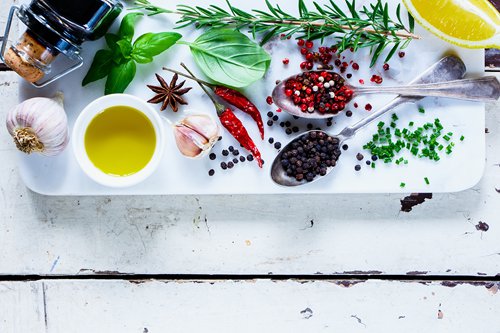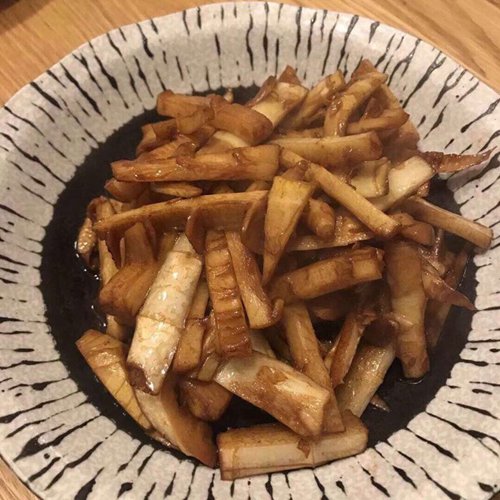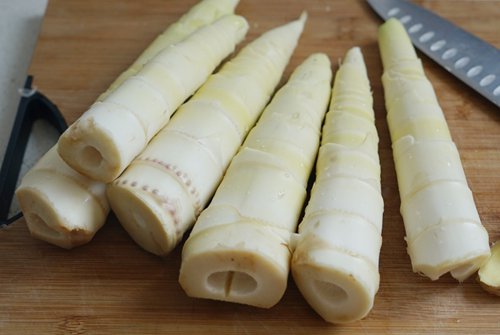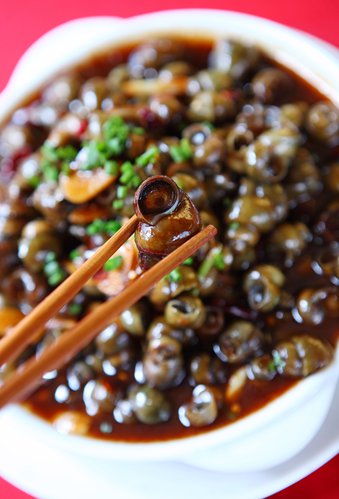METRO SHANGHAI / METRO SHANGHAI
Cook affordable seasonal Shanghai dishes in your own kitchen
Shoots and snails
Chinese people get used to eating different seasonal dishes in accordance with the solar calendar, especially here in the Yangtze River Delta region, where the four seasons and the climate help cultivate different vegetables depending on the time of year.
The Global Times would like to introduce you to some very affordable yet delicious local dishes that can easily be cooked at home. The first is bamboo shoots, which can be expensive in the winter and early spring, when the output is very limited.
But in mid-April, bamboo shoots grow wildly in the local mountains. The more rainfall, the faster their growth. This huge supply in Shanghai's neighboring provinces of Jiangsu, Zhejiang and Anhui guarantees fresh and cheap bamboo shoots in regional markets. The price falls from 30 yuan ($4.78) to 40 yuan per kilogram to around 15 yuan per kilogram.
Bamboo shoots are a healthy and nutritious food, as it is full of fiber. Yet some parts of the shoot can be harmful, so it is always best to overcook and stew the shoots.
Oil-stewed shoots
One popular Shanghai bamboo shoot dish is called youmensun (oil-stewed shoots). Pour oil in a hot wok, put in thinly-sliced bamboo shoots and fry them with a large flame. The high temperature helps eradicate harmful ingredients without destroying the fiber.
Fry for a long period before adding soy sauce. Sugar is unnecessary, as fresh bamboo shoots taste naturally sweet. You can add some salt depending on your personal preference. Just remember - the longer the shoots are stewed, the better they taste.
Restaurants and local households alike also prepare yanduxian (preserved meat braised with fresh meat) this season. It is a combination of preserved salty meat, fresh meat and bamboo shoots. Previously, only pork was used. But with innovation and fusion, people nowadays also use chicken, duck and even fish.
Bamboo shoots are good at absorbing flavors from meats, thus making the dish more savory. Over-braising helps make fat dissolve better into the broth.
Preserving fresh bamboo shoots is another popular albeit traditional practice in East China. As the English saying goes, "we eat what we can, and what we can't, we can." Chinese farmers best know how to preserve bamboo shoots - by boiling and drying. It can then be used all year long to cook with meat or for soup.
Fried river snails
River snails from the Yangtze River Delta region gave birth to the ancient Chinese saying that a "river snail around Qingming Festival is even better than a goose."
As river snails grow in the mud along a riverbank, it is important to know the origin of the snails you are eating. Snails from polluted sources are of course more dirty and dangerous. Thus, after you purchase your bag of river snails, it is highly advised to place them in a basin of water with a few drops of oil to help them excrete any mud in their systems.
Ginger, garlic and rice wine are necessary to make river snails taste less "fishy" and more scrumptious. It's always a challenge for diners to obtain the small bit of snail meat from the shell. People in the Yangtze River Delta region usually just suck out the meat by forming a vacuum with their mouths. Others use toothpicks.
To prepare this dish, heat a wok with a large flame, pour in oil, then slice up ginger and garlic. After the garlic turns yellow, place the river snails in the wok and let them fry for at least three minutes. Add some rice wine and let boil for several minutes to kill parasites inside the snails.
If you like spicy food, you can chop up some red peppers. Add salt according to your taste. Soy sauce and shallots will make it even better. Remember to place some broth in your plate, otherwise the snails will be too dry and less tasty.
As another old Chinese saying illustrates, "even robbers couldn't drive away people from enjoying wine and river snails."

Photos: VCG and Feng Yu/GT

Oil-stewed bamboo shoots

Peeled bamboo shoots

Fried river snails
For more information, please check out two videos created by the Global Times about how to prepare these dishes. Scan the QR codes to watch.



